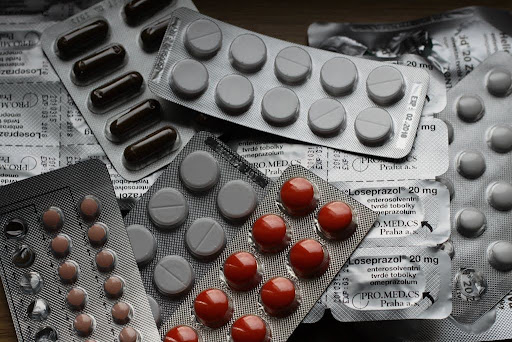In today's world, the ability to identify medications quickly and accurately is crucial for ensuring safety and proper usage. A pill identifier is a valuable tool that assists individuals in recognizing pills based on their imprint, color, and shape. This article delves into the significance of pill identification, the methods available for identifying pills, and the implications of misidentifying medications. Remember: When in doubt, ask your pharmacist!
 The Importance of Pill Identification
The Importance of Pill Identification
Identifying pills correctly is essential for several reasons. First and foremost, it helps prevent medication errors, which can lead to serious health complications. Misidentifying a pill can result in taking the wrong medication, which might exacerbate a condition or cause harmful side effects.
Moreover, understanding what a medication is can provide insights into its purpose, dosage, and potential interactions with other drugs. This knowledge is particularly vital for caregivers, healthcare professionals, and patients managing multiple prescriptions.
Preventing Medication Errors
Medication errors can occur in various settings, including hospitals, pharmacies, and at home. A pill identifier can significantly reduce the risk of these errors by allowing users to verify the medication before consumption. This is especially important for individuals who may have difficulty remembering the names or appearances of their medications.
For instance, a patient prescribed multiple medications may inadvertently mix them up. Using a pill identifier can help clarify which medication is which, ensuring that the right pill is taken at the right time. Additionally, in emergency situations, having the ability to quickly identify a pill can be life-saving. First responders can make more informed decisions about treatment if they know exactly what medications a patient has ingested.
Understanding Medication Purpose
Knowing the specific medication one is taking can empower patients to engage more actively in their healthcare. By identifying a pill, individuals can research its uses, side effects, and interactions with other drugs. This can lead to more informed discussions with healthcare providers, ultimately improving health outcomes. Furthermore, understanding the purpose of a medication can foster adherence to treatment plans. Patients who comprehend why they are taking a specific drug are more likely to follow their prescribed regimen.
For example, knowing that a particular pill is essential for managing blood pressure can motivate a patient to prioritize taking it regularly, thereby enhancing their overall health and well-being. This proactive approach not only benefits the individual but also alleviates some burden on healthcare systems by reducing the incidence of complications arising from non-adherence.
Methods for Identifying Pills
There are several methods available for identifying pills, ranging from traditional approaches to modern technology. Each method has its advantages and limitations, making it essential to choose the right one based on the situation.
Visual Identification
 Visual identification involves examining the physical characteristics of a pill, such as its color, shape, and imprint. Many people rely on this method when they have a pill in hand. However, it can be challenging, as many medications may look similar.
Visual identification involves examining the physical characteristics of a pill, such as its color, shape, and imprint. Many people rely on this method when they have a pill in hand. However, it can be challenging, as many medications may look similar.
To effectively use visual identification, one must pay close attention to the following characteristics:
Color: The color of the pill can serve as an initial clue.
Shape: Pills come in various shapes, including round, oval, and square.
Imprint: Most prescription and over-the-counter medications have unique imprints that can be used for identification.
Additionally, it's important to note that lighting conditions can affect how a pill's color is perceived. For example, a pill may appear lighter or darker depending on whether it is viewed in natural light or artificial light. Moreover, some medications may come in multiple colors or variations, further complicating visual identification. Therefore, having a reliable reference, such as a pill identification book or a trusted online resource, can enhance accuracy when identifying pills visually.
Online Pill Identifier Tools
With the advancement of technology, numerous online pill identifier tools have emerged. These tools allow users to input specific characteristics of a pill, such as its color, shape, and imprint, to receive potential matches.
Some popular online resources include:
These platforms often provide detailed information about the identified medication, including its uses, side effects, and manufacturer information. Furthermore, many of these tools are updated regularly to include new medications and formulations, ensuring that users have access to the most current information available. This is particularly beneficial for individuals who may be taking newly released medications or those who are unsure about the pills they have been prescribed.
Mobile Applications
Mobile applications have become increasingly popular for pill identification. Many apps are designed to help users identify pills quickly and efficiently using their smartphones. These apps often feature a user-friendly interface that allows users to input pill characteristics easily.
Some notable apps include:
These applications can also offer additional features, such as medication reminders and tracking, making them a comprehensive tool for managing medications. In addition to identification, some apps provide educational resources that explain the purpose and potential interactions of various medications, empowering users to make informed decisions about their health. With the convenience of mobile technology, users can carry a wealth of information in their pockets, making it easier than ever to stay on top of their medication regimens.
Challenges in Pill Identification
Despite the various methods available for identifying pills, challenges still exist. Misidentification can occur due to several factors, including similar appearances among different medications and the presence of generic versions of brand-name drugs.
Variability in Imprints and Colors
One of the primary challenges in pill identification is the variability in imprints and colors. Different manufacturers may produce pills with similar shapes and colors but different imprints. Furthermore, generic medications may have different appearances than their brand-name counterparts, complicating identification.
For example, two different medications may both be round and blue but have different imprints, leading to potential confusion. This highlights the importance of using multiple identifying characteristics when attempting to identify a pill. In addition, the color of a pill can be influenced by the type of coating used, which may vary by manufacturer or even by batch. As a result, relying solely on color can be misleading, and it is essential to consider other factors such as size, shape, and imprint codes to ensure accurate identification.
Counterfeit Medications
The rise of counterfeit medications poses another significant challenge in pill identification. Counterfeit pills may look very similar to legitimate medications but can contain harmful substances or incorrect dosages. Therefore, it is crucial for individuals to verify the authenticity of their medications.
Using a pill identifier can help identify counterfeit medications by checking for discrepancies in imprint, color, and shape. Additionally, individuals should always obtain medications from reputable sources, such as licensed pharmacies.
The increasing sophistication of counterfeiters means that even experienced healthcare professionals can be deceived. Therefore, education on the signs of counterfeit medications is vital. Patients should be aware of the potential red flags, such as unusually low prices, unfamiliar packaging, or pills that do not match the expected appearance. Engaging with healthcare providers about any concerns regarding medications can also foster a safer approach to pharmaceutical consumption.
Best Practices for Pill Identification
To accurately and safely identify pills, it's important to follow established best practices. These practices can help minimize the risk of medication errors and enhance overall safety.
Consulting Healthcare Professionals
When in doubt about medication, it is always best to consult a healthcare professional. Pharmacists and doctors can provide valuable insights and assistance in identifying pills. They have access to extensive databases and resources that can help confirm the identity of a medication.
Additionally, healthcare professionals can offer guidance on the proper usage of medications, potential side effects, and interactions with other drugs, ensuring that patients are well-informed about their treatments. They can also help clarify any confusion regarding generic versus brand-name medications, which can be crucial in understanding the correct pill to take.
Keeping an Updated Medication List
Maintaining an updated list of medications can significantly aid in pill identification. This list should include the name of each medication, its appearance, dosage, and the prescribing doctor. Having this information readily available can simplify the identification process and serve as a reference when questions arise.
Furthermore, individuals should regularly review their medication lists with their healthcare providers to ensure accuracy and address any changes in their treatment plans. This practice not only helps with identification but also promotes better medication management, as it allows healthcare providers to monitor adherence and make necessary adjustments based on the patient’s evolving health needs.
Using Multiple Identification Methods
Relying on a single method of identification can lead to errors. It is advisable to use multiple methods when attempting to identify a pill. For example, combining visual identification with an online tool or mobile app can enhance accuracy.
By cross-referencing information from various sources, individuals can increase their confidence in the identified medication and reduce the risk of misidentification. Additionally, utilizing community resources, such as local poison control centers or drug information hotlines, can provide immediate assistance and expert advice, especially in urgent situations where quick identification is crucial.
Legal and Ethical Considerations
 When it comes to pill identification, there are legal and ethical considerations that must be taken into account. The responsibility of accurately identifying medications extends beyond the individual and into the realms of healthcare providers and manufacturers.
When it comes to pill identification, there are legal and ethical considerations that must be taken into account. The responsibility of accurately identifying medications extends beyond the individual and into the realms of healthcare providers and manufacturers.
Patient Privacy and Confidentiality
Patient privacy is paramount in healthcare. When using online tools or mobile applications for pill identification, individuals should be cautious about sharing personal information. Many reputable platforms prioritize user privacy, but it is essential to read privacy policies and understand how data is used.
Healthcare providers also have a responsibility to maintain patient confidentiality when discussing medications. This includes ensuring that sensitive information is not disclosed without consent. The Health Insurance Portability and Accountability Act (HIPAA) sets the standard for protecting sensitive patient information, mandating that healthcare professionals implement safeguards to prevent unauthorized access to personal health data. This legal framework emphasizes the importance of confidentiality, ensuring that patients can trust their providers with their medical information.
Regulatory Standards for Medications
Pharmaceutical companies are required to adhere to strict regulatory standards when manufacturing medications. This includes ensuring that pills are accurately imprinted and labeled. However, discrepancies can occur, leading to potential identification issues.
Regulatory bodies, such as the Food and Drug Administration (FDA), play a crucial role in overseeing the safety and efficacy of medications. They also provide guidelines for pill identification, helping to ensure that patients have access to accurate information. In addition to the FDA, other organizations, such as the European Medicines Agency (EMA), contribute to the global regulatory framework, ensuring that medications meet rigorous safety standards across different regions. These agencies not only monitor the manufacturing processes but also engage in post-marketing surveillance to identify any adverse effects that may arise after a drug is released to the public. This ongoing oversight is vital for maintaining public trust in pharmaceuticals and ensuring that patients receive safe and effective treatments.
Take Control of Your Medication Safety with Doctronic
Knowing exactly what medication you’re taking is key to staying safe and healthy. Doctronic helps you navigate pill identification with easy-to-use interface and clear guidance—so you can feel confident about every dose. When you’re informed and proactive, you’re in the driver’s seat of your health journey.



 The Importance of Pill Identification
The Importance of Pill Identification Visual identification involves examining the physical characteristics of a pill, such as its color, shape, and imprint. Many people rely on this method when they have a pill in hand. However, it can be challenging, as many medications may look similar.
Visual identification involves examining the physical characteristics of a pill, such as its color, shape, and imprint. Many people rely on this method when they have a pill in hand. However, it can be challenging, as many medications may look similar. When it comes to pill identification, there are legal and ethical considerations that must be taken into account. The responsibility of accurately identifying medications extends beyond the individual and into the realms of healthcare providers and manufacturers.
When it comes to pill identification, there are legal and ethical considerations that must be taken into account. The responsibility of accurately identifying medications extends beyond the individual and into the realms of healthcare providers and manufacturers.